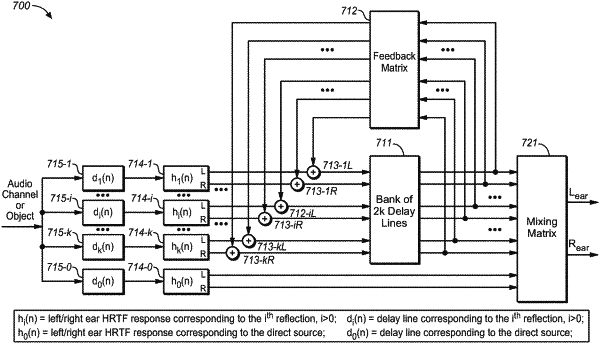| CPC H04S 3/004 (2013.01) [G10K 15/08 (2013.01); H04S 5/005 (2013.01); H04S 7/302 (2013.01); H04S 7/304 (2013.01); H04S 2400/01 (2013.01); H04S 2420/01 (2013.01)] | 5 Claims |

|
1. A method of generating left-ear and right-ear binaural signals, the method comprising:
determining a sound source location corresponding to each of one or more audio input signals;
convolving each of said one or more audio input signals with one or more components of a BRIR corresponding to the sound source location to obtain left-ear and right-ear intermediate signals, wherein at least one of said components of the BRIR comprises directionally-controlled reflections that impart a particular perceptual cue to said one or more audio input signals respectively, the particular perceptual cure being selected from a plurality of perceptual cues, wherein the directionally controlled reflections are generated using a directional pattern which describes how directions of arrival of the directionally-controlled reflections change in relation to a direction of the sound source location as a function of time; and
combining the left-ear intermediate signals to produce the left-ear binaural signal and combining the right-ear intermediate signals to produce the right-ear binaural signal.
|